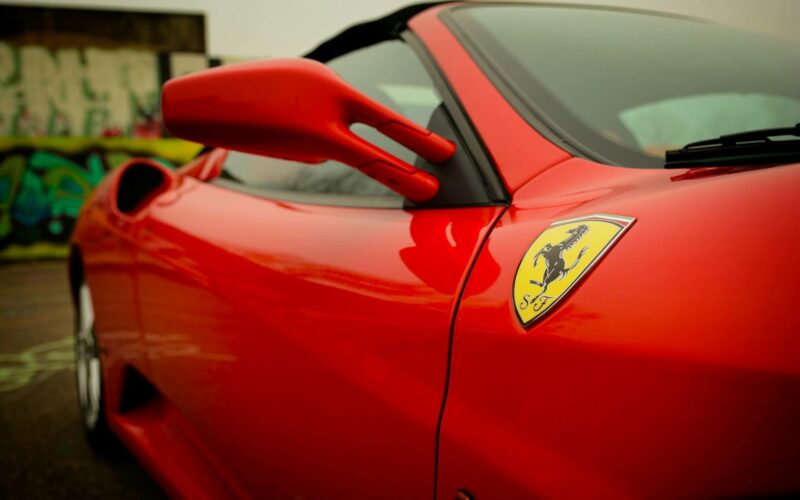Fueled by Enzo Ferrari’s legacy, Ferrari has emerged globally as a brand synonymous with perfection, luxury, and excellence. Winning “over 200 Grand Prix races and 16 Constructors’ Championships,” Ferrari’s classic car designs have significantly influenced the look and engineering of subsequent sportscars.1[1] Richard Shults, Why Ferrari Is More Than Just A Car: The Brand’s Cultural Impact and Influence, Borrō By Luxury Asset Capital, Jul. 21, 2023, https://borro.com/why-ferrari-is-more-than-just-a-car-the-brands-cultural-impact-and-influence/. The expansion into adjacent markets, including ready-to-wear luxury clothing and F1 racecar toy models reflects the brand’s commitment to innovation beyond its core automotive domain.2[2] Nick Remsen, Ferrari Roars into the Fashion World, GQ, Oct. 6, 2021, https://www.gq.com/story/ferrari-clothing-line. Usually car designs are eligible for copyrights, and while trademarks do not protect a physical object itself, they do protect “the way [an object] is branded.”3[3] Xavier Morales, Can I Trademark a Product, Secure Your Trademark.com, https://secureyourtrademark.com/can-you-trademark/trademark-a-product/#:~:text=Although%20you%20cannot%20trademark%20the,object%20or%20service%20is%20branded. Ferrari’s innovative designs and brand exclusivity attract emulation by other companies,4[4] For example, General Motors bought a wrecked Ferrari 458 engine off eBay to create the engine found in the C8 Corvette. Steven Symes, GM Copied the Ferrari 458 for the C8 Corvette, Motorious (Mar. 2022), https://www.motorious.com/articles/news/gm-copied-ferrari-458/. Another example is Masonry Design, a company that specializes in tuning of high-end cars, distributing tuning kits to make a 488 GTB appear extremely similar to the Ferrari FXX-K track-only hyper car. Allen & Overy, Ferrari S.p.A. v. Mansory Design – partial designs can be protected as unregistered Community designs, Nov. 2021, https://www.allenovery.com/en-gb/global/news-and-insights/publications/ferrari-spa-v-mansory-design-partial-designs-can-be-protected-as-unregistered-community-designs. leading to trademark litigation against fashion designers, musicians, car designers, and racers.5[5] For example, Ferrari S.P.A. v. Roberts, 944 F.2d 1235 (6th Cir. 1991); Tatiana Baranova, Ferari v. Plein: The Fast Against the Furious, LARC (2021), https://larc.cardozo.yu.edu/cgi/viewcontent.cgi?article=1213&context=aelj-blog. Emerging business partnerships and the continuous modernization of its trademarks induced Ferrari’s all-time high stock price of $441.80 per share, indicating the immense business and monetary implications associated with trademarks.6[6]Ferrari, Investors Stock Info, Ferrari.com, https://www.ferrari.com/en-EN/corporate/stock-info. (accessed March 24, 2024).
Brands face several challenges concerning trademark protection when modernizing their marks with trending and innovative characteristics. While companies like Ferrari are modernizing their trademarks to maintain consumer desire, exclusivity, and admiration for their products, they must also navigate the legal consequences of modernizing a trademark. For Ferrari, this strategy includes protection over their iconic automotive designs, which recently have been subject to the European Union’s (E.U.) “use it or lose it” rule. In the U.S., trademark laws emphasize the distinctiveness of a mark to avoid confusion, requiring continuous use for three years under the Latham Act.7[7]See, Igor Demcak, 4 Differences Between Trademark Registration in the US and the EU, Tramatm, Mar. 22, 2023, https://www.lexology.com/library/detail.aspx?g=74731da8-0f4f-45c9-9c33-9bcec5e65024#:~:text=In%20the%20European%20Union%2C%20a,to%20demonstrate%20use%20in%20commerce. In contrast, the E.U. requires that a mark is used purposefully in connection with relevant goods and services, subjecting it to cancellation if not used continuously five years after registration.8[8]Id. Ferrari has struggled to protect its iconic trademarks as a result of modernizing its marks, leading to increased litigation and issues for the luxury brand.
The Use It or Lose It Rule
Under E.U. trademark law, owners risk losing their product’s trademark rights if the mark lacks genuine use for five consecutive years after registration without clear intent for future use.9[9]European Intellectual Property Office, Invalidity and Revocation (2024); Justia, Intellectual Property Law Center, Trademark Law (October 2023), https://www.justia.com/intellectual-property/trademarks/. “Genuine use” is the “deliberate and continuous, not sporadic, casual or transitory” use of a trademark in commerce and relevant markets.10[10]Emily Bolton, The Trademark System of the European Union, 27(1) Conn. J. Int’l L. 371, 381 (2012). Under the European Union Intellectual Property Office (EUIPO), when a trademark links a common surname like Ferrari to a product or service and the trademark is not consistently utilized with adequate measures, it is “misleading as to the nature, quality or geographical origin of the goods and services for which it is registered.”11[11]European Intellectual Property Office, supra. Thus, trademark owners must be vigilant and proactive to maintain protection, giving rise to the reminder to “use it or lose it.”
When modernizing their trademarks, brands encounter specific legal challenges, including inadvertent infringement on existing marks and the risk of abandoning historically significant marks with brand equity and consumer recognition. 12[12]See United States Patent and Trademark Office, Strong Trademarks (Updated 2023), https://www.uspto.gov/trademarks/basics/strong-trademarks. When competitors create modern versions of established marks, that further complicates a brand’s trademark protection strategies and general protection of marks.
The 250 GTO Shape
In 2008, Ferrari’s 250 GTO became one of the “most expensive cars” sold in the world, a feat made more significant by the year prior, when Ferrari registered a trademark with the EUIPO for the sportscar’s sleek, yet striking design.13[13]See The FLT, Ferrari Handed a Loss in Trademark Fight Over the 3D Design of its 250 GTO, the “World’s Most Expensive Car.”, The Fashion Law, (July 15, 2020). https://www.thefashionlaw.com/ferrari-handed-a-loss-in-trademark-fight-over-the-3d-design-of-its-250-gto-the-worlds-most-expensive-car/. In 2018, Ferrari argued that Ares’ (a luxury car customization company) new car design was extremely similar to the 250 GTO, not just an “inspired version.” 14[14]Ares Performance AG v. Ferrari S.p.A, European Union Intellectual Property Office, Cancellation Division, C-30/743 (2018), https://euipo.europa.eu › 20200529_000030743. Ares countered with the “use it or lose it” rule, claiming Ferrari abandoned the trademark, having registered the trademark too recently and only to prevent third parties from selling similarly built sportscars. 15[15]See Id. Ferrari introduced receipts to show purchases of toy models of the 250 GTO, proving “genuine use” of the 250 GTO shape’s trademark for these small replicas, and retaining the trademark for only “toys and model cars.” 16[16]See TFL, Ferrari Handed a Loss in Trademark Fight Over the 3D Design of its 250 GTO, the “World’s Most Expensive Car.”, The Fashion Law, (Jul. 15, 2020), https://www.thefashionlaw.com/ferrari-handed-a-loss-in-trademark-fight-over-the-3d-design-of-its-250-gto-the-worlds-most-expensive-car/; Ares Performance AG v. Ferrari S.p.A, European Union Intellectual Property Office, Cancellation Division, C-30/743 (2018). Despite Ferrari’s loss of trademark rights concerning sportscar production, the brand’s expansion into diverse market sectors and consistent design use achieved the partial victory, reflected through this case and the recurring battle for Ferrari to maintain its iconic trademarks.
The Testarossa Name
Like the 250 GTO, Ferrari’s Testarossa gained popularity for its distinct design, notably the red-painted cam covers gave the sportscar and derived models a striking appearance reminiscent of Ferrari’s renowned aesthetic.17[17]Dr. Volker Schmitz-Fohrmann, Why Ferrari can keep the “Testarossa” Trademark and the ECJ’s Latest Case Law on Genuine Use, Boehmert & Boehmert (March 2021), https://www.boehmert.de/en/ip-update-ferrari-trademark-testarossa/. The Testarossa name was trademarked in Germany, “to designate ‘apparatus for locomotion by land, air or water and components therefor.’” 18[18]Miguel Bibe, Ferrari Testarossa – The Importance of Well-Known Trademarks Genuine Use, Inventa, Nov. 16, 2017. https://inventa.com/en/news/article/270/ferrari-testarossa-the-importance-of-well-known-trademarks-genuine-use#:~:text=The%20German%20court%20considered%20that,Court%20declared%20the%20Ferrari%20trademark. In 2017, Autec AG, a German toy company, attempted to trademark Testarossa in the E.U. for products including electric bicycles. 19[19]Id. Similar to Ares, Autec AG argued that Ferrari could not assert ownership over the mark because they had not used it for over twenty years. 20[20]Dr. Volker Schmitz-Fohrmann, Why Ferrari can keep the “Testarossa” Trademark and the ECJ’s Latest Case Law on Genuine Use, Boehmert & Boehmert (March 2021), https://www.boehmert.de/en/ip-update-ferrari-trademark-testarossa/. They further argued that Ferrari had not put the name to “genuine use” because it was only used for luxury cars when registered for the mass market.21[21]Id. The court ruled that second-hand vehicles were not a new use of the name, because Ferrari could not control the resales, so Ferrari lost the right to use its Testarossa name for cars.22[22]Ferrari Back on the Grid with Testarossa Trademark, Novagraaf, Nov. 18, 2020, https://www.novagraaf.com/en/insights/ferrari-back-grid-testarossa-trademark.
However, the CJEU disagreed, reasoning that second-hand use of products under the Testarossa name counts as “genuine use” of the trademark unless consumers “perceive [the products] as an independent subcategory.”23[23]Id. This ruling allowed Ferrari to fight for the Testarossa name again. It emphasized that a brand could safeguard its trademarks by ensuring consistency in “genuine use” and that a product’s resales that align with the purpose of the original product constitute sufficient use to maintain ownership of a trademark.24[24]Ferrari Back on the Grid with Testarossa Trademark, Novagraaf, Nov. 18, 2020.
Future of Ferrari’s Trademark Battles
Ferrari’s legal battles demonstrate that the path to preserving trademark integrity is fraught with challenges. Brands must navigate the complexities of trademark law and consumer perceptions to ensure the lawful preservation of their name. By understanding the possible consequences and protecting themselves, as evidenced by Ferrari’s legal challenges, world-renowned brands can continue to have both old and new trademarks thrive in an ever-evolving marketplace.
Written by: Meghan Patel is a 2026 J.D. Candidate at Brooklyn Law School




